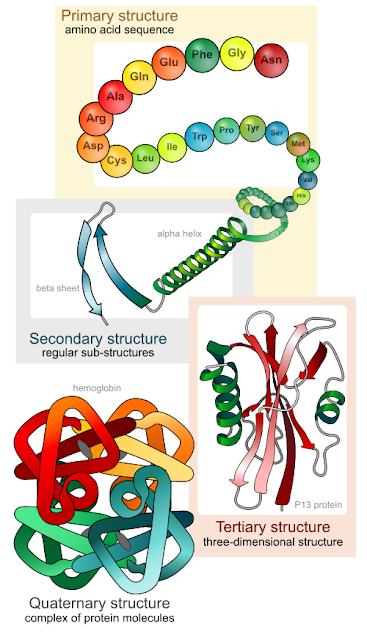Do you like computer games?
If yes, here you have two options to play and at the same time contribute to genetic and biotechnology research:
 |
| Figure 1. Example of multiple sequence alignment. |
Humans have evolved efficient pattern-recognition and visual problem-solving skills. Philo abstracts multiple sequence alignment to manipulating color patterns, adapting the problem to benefit from human capabilities. Players receive data which has already being aligned by an algorithm and play to optimize the alignment. With many people working on it eventually some players may end up with a better alignment than the computer. Play philo!
 |
| Figure 2. Levels of protein structure. |
Proteins are made up of 20 different amino acids and are usually between 100 and 1000 amino acids long. However, they do not look like straight chains of amino acids, they fold up (figure 2) according to the chemical properties of the amino acids and this structure specifies the function of the protein. Foldit allows players to refine the structure of proteins finding more stable configurations. In fact, foldit players have designed a protein that could be useful for the production of renewable fuels, drugs and chemicals with 18-fold higher enzymatic activity than the original.
You can watch the video below for more information on this game. Play foldit!
No comments:
Post a Comment